Battle Analysis: Operation Citadel (Kursk)
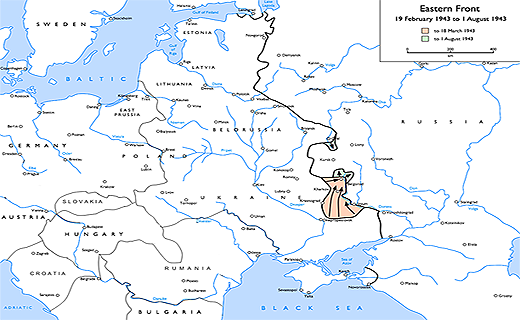
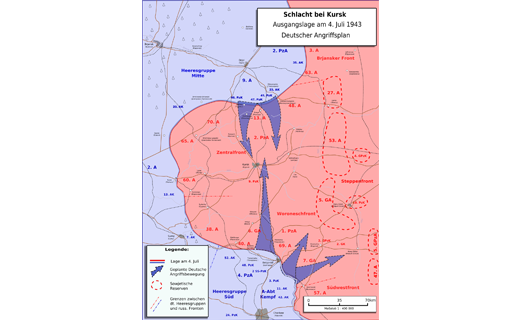
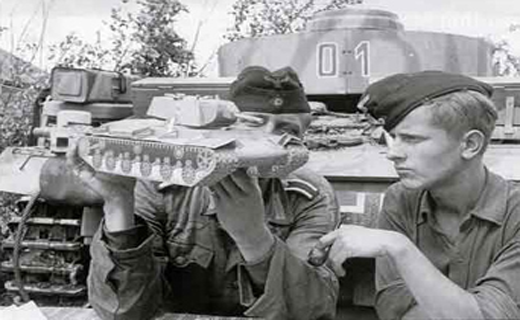
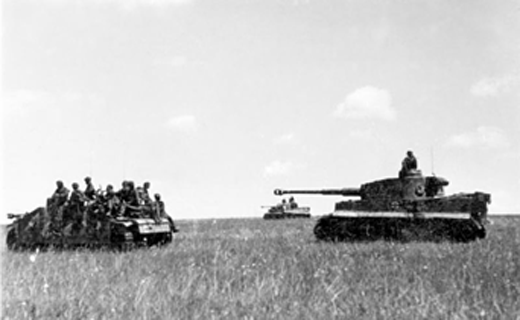
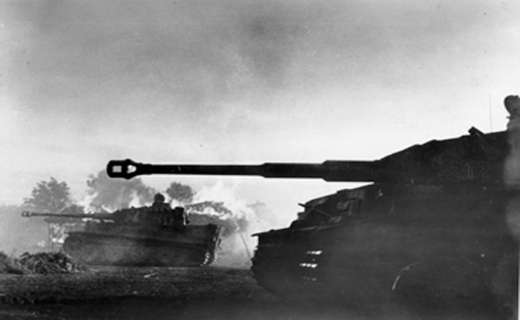
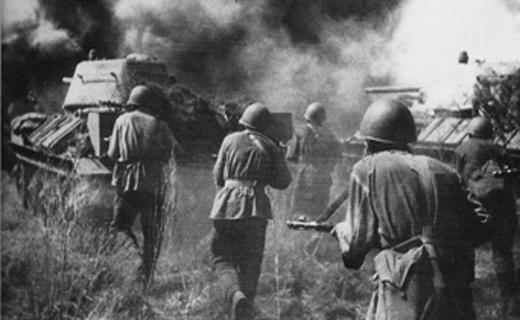
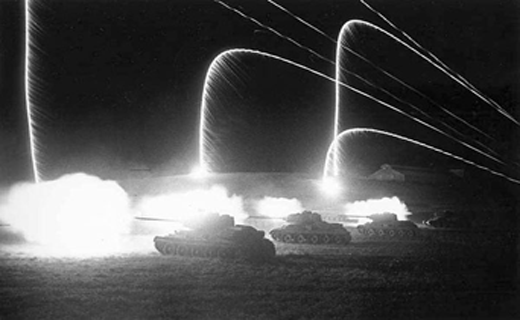
The combined-arms breach has fallen by the wayside in recent years as our doctrine has focused more on counterinsurgency operations. This needs to change to restore our ability to dominate future battlefields through combined-arms maneuver. The U.S. Army now is smaller but still retains various commitments around the world. Our Army must also retain the capacity to rapidly deploy and defeat our enemies on their own territory.
With the success of insurgents employing improvised explosive devices (IEDs) in recent conflicts, the principles of breaching are extremely relevant to future Army training. In particular, combined-arms breaching allows armored and mechanized forces to rapidly mass multiple combat elements at the point of penetration.
The current training program at the Maneuver Captain’s Career Course (MCCC) tries to fix this fundamental gap in the U.S. Army’s return to unified land operations. Officers need to view breaching not just as an engineer concept but also as the critical point on a battlefield where a friendly force will likely suffer its largest casualties. This makes the combined-arms breach applicable to not just breaching operations, but also to the movement and maneuver of all combat elements. An organization capable of successfully conducting a combined-arms breach will have the experience and training to conduct maneuver warfare. By making the combined-arms breach the central aspect of our future training, we can create organizations capable of dealing with the challenge of fighting offensive action with limited resources.
Combined-arms breaching at Kursk
One can see this focus on combined-arms breaching principles has parallels in history. For example, in preparation for the Battle of Kursk in 1943, the Germans revamped the way they prepared armored breakthrough elements for attacking Soviet defensive positions. The Germans, fielding a smaller army and needing to achieve a rapid offensive victory on the enemy’s soil, recognized the need to focus on combined-arms breaching principles to drive their training.
Although Kursk was a strategic defeat for the Germans overall, the Germans used innovative breaching tactics to attack a heavily fortified enemy. Faced with the prospect of a continued war on multiple fronts against vastly superior enemies, the Germans opted to take the offensive on the Eastern Front. Operation Citadel was an attempted two-pronged envelopment to eliminate the Soviet forces inside the Kursk salient, providing the Germans a respite from the coming Soviet summer offensive.
Unlike the fluid, mobile battles of 1941 and 1942, the Germans knew they would face prepared Soviet defensive positions supported by strong armored counterattacks. Also, a German shortage of infantry meant that armored elements would need to secure their own flanks, something that would rapidly wear down the German spearheads. The Germans knew that to overcome these weaknesses, they needed to enhance the survivability of their panzer divisions, which would lead the coming offensive.
The overall situation in July 1943, especially following the German defeat at Stalingrad, seemed to greatly favor the Soviet army. The 1942-1943 Soviet winter offensive drove all the way to Kharkov before suffering a severe setback due to a German counterattack in March. This led to the creation of the Kursk salient. In an effort to shorten their defensive lines, the Germans launched a focused offensive aiming to envelop Kursk from two directions. The Germans delayed their attack until July, allowing them to mass nearly 900,000 men and 2,700 tanks for the operation.1
The Soviets concentrated elements of four fronts (army groups) to defend the Kursk bulge with 1,300,000 men and 3,300 tanks.2 The Soviet overarching strategy was to grind down the German offensive, then immediately shift over to a counteroffensive against the exhausted German attackers. The main Soviet belts stretched to nearly 37 miles in depth, with the first battle line of three trench systems totaling about three to four miles deep. Seven more defensive belts stretched back throughout the Kursk area of operations, guarded by nearly 400,000 anti-tank and anti-personnel mines.3 These were dotted with anti-tank strongpoints that had four to six anti-tank guns, anti-tank rifles, mortars and a mobile detachment of engineers that could rapidly lay mines.4
Soviet LTG Nikolai Vatutin’s Voronezh Front, totaling 625,591 men and 1,704 tanks, occupied the southern flank of the Kursk bulge.5 COL GEN Ivan Konev’s Steppe Front of 573,195 men and 1,639 tanks positioned itself behind the Soviet lines as the strategic reserve to blunt any German breakthrough.6 Also, the Soviets benefited from fighting on the defensive behind prepared positions. These positions were there to force the Germans to canalize their attacks onto narrower fronts, eventually making them vulnerable to counterattacks.
German training plan
The Germans needed to develop a training focus to deal with the problem of armored breakthrough elements attacking enemy strongpoints. With limited manpower available to them, the Germans believed it was more important to gather their own strength first, even at the cost of facing much stronger Soviet positions. Since 1940, every German summer offensive of the war had met with overwhelming success against numerically superior forces. The Germans believed if they broke through the Soviet defenses and into open country, they could encircle and destroy Soviet forces. The spearhead of the offensive’s southern prong was the Fourth Panzer Army, led by II SS Panzer Corps and 494 armored fighting vehicles (390 of them tanks).7
The SS Panzer Corps had led the Germans to victory at Kharkov following the disaster at Stalingrad, but after the heavy fighting around Kharkov in early 1943, the Waffen SS arm badly needed time to train its new reinforcements. The corps, organized into three panzer divisions, (1st Leibstandarte Adolf Hitler (LSSAH), 2nd Das Reich and 3rd Totenkopf) now consisted of veteran formations. However, the divisions still included a significant number of new recruits. Even 2,500 Luftwaffe personnel had been transferred to the II Panzer Corps to serve as infantrymen.8 Knowing the Germans would need to defeat strong Soviet defensive positions, they adopted a different training program to prepare their recruits for the complexity of combined-arms operations against a heavily fortified enemy.
The LSSAH division created a new training program as it began refitting in April. This schedule included two sets of five-week basic training modules to transform raw recruits into soldiers.9 Each training program culminated in a battalion-level exercise conducted in gas masks that incorporated armor and artillery support. The introduction of the Tiger tank meant that operators needed to quickly learn the differences between the massive Tigers and the older Panzer III and IV models. Because of the limited resources available for Tiger tank training, platoons had to move up to positions on the Donets River and shell known Russian positions on the far bank as a way to continue training.10 Such exercises slowly attuned new soldiers to some combat action on the Eastern Front before their first real bloodletting.
Localized tank actions against Soviet positions also involved coordination with scout plans to pick out targets. Additional tank training depended on concealment and the ability to rapidly reposition behind micro terrain.11 This allowed the tanks to engage from different and unexpected positions, blunting the superior number of tanks the Soviets could bring to bear. Finally, German tank crews also conducted radio and technical examinations of their crew, and even graded their soldiers on their results, ensuring that each soldier kept a sharp mind on the mechanical aspects of his vehicle.
Tests like these, and against real-life Soviet positions, brought up the confidence of both new and veteran soldiers before the offensive. Without the benefit of a large manpower pool or time to train their soldiers methodically, the Germans brought soldiers to the front and trained them during their deployments. High-quality replacement soldiers gave the Germans the ability to overcome the quantitative advantage of the Soviet defenses.
The change in the pace and complexity of unit training reflected an overall shift in emphasis from the German Wehrmacht’s leadership. COL GEN Heinz Guderian, the inspector of armored troops, banned all drill and classroom exercises as well as sequential training from squad to battalion level; instead, German soldiers trained on a weekly rotation, with one day dedicated to squads, one to platoons and so on.12
Rather than taking the time to slowly build up their teams over months of training, the Germans quickly integrated different organizations together to prepare them for Operation Citadel. By the second and third day, new recruits focused on the most difficult aspects of combat, especially night and dusk operations. All training focused on ruthless repetition of camouflaging, firing and digging in every night. These tenets of German training sought to counter the Soviet penchant for frequent counterattacks. Even during training, German soldiers needed to maintain cover and concealment; if they were spotted by observers, a red flag would go in the air, and the exercise would have to restart.13 Such training brought an element of realism to the new soldiers and eliminated the “end of exercise is called; we can all relax” mentality of soldiers tired of training. Rather than putting forth their best effort until an exercise concluded, German soldiers needed to deal with the concept of an ever-present enemy during their training.
Because of the added realism of German training, combat-support elements trained for longer periods with better-prepared recruits. The Das Reich division even reconstructed Soviet defenses based on reconnaissance photos. First, the engineers used these models to practice individual breaching techniques; then, the engineers worked with line units, allowing platoons and companies to train on these same models.14 On June 5, the division validated its training regimen by launching a local offensive against a Soviet defensive position at Hill 183.15
The attack started with a reconnaissance operation, which called for fire against the Soviet bunkers; then, as the infantry approached, dive-bombers targeted Soviet positions. As the artillery shifted toward the rear of the Soviet positions, the infantry suppressed the bunkers with small arms, allowing the engineers to breach trenches and destroy bunkers with flamethrowers. Once the hill was secured, the attack was called off, since it was intended purely as a training exercise.
The Germans, with their limited resources and facing the need for a rapid victory, had scrapped all the non-essential elements of their training program. The Germans had narrowed their training to increase the survivability of their precious soldiers and tanks.
With their shortened training schedule, II Panzer Corps focused its efforts on developing the combined-arms tactics to conduct breaching operations. Once the Germans broke through the Soviet lines, they could resort to maneuver warfare on the open steppes and encircle Kursk. However, they recognized the need to rapidly conduct breaching operations at the point of attack to reduce the Soviet defensive advantage.
Because the Fourth Panzer Army only had one infantry division attached to it (167th Infantry), the German panzer divisions needed to prepare to conduct their own breaching operations.16 These divisions included combat engineer battalions that could rapidly advance with the armored formations. A typical engineer squad had five soldiers, 50 mines, explosive satchel charges, mine detectors, entrenching tools and flamethrowers.17 Engineers accompanied reconnaissance squadrons before the operation, enabling them to scout out obstacles as needed.18 However, this was only useful for the first series of defenses, and a more flexible approach was necessary for the multi-layered Soviet positions.
Once the offensive began, the engineers rode on trucks or halftracks behind the heavier tanks, which would creep forward to find the forward edge of a minefield. Some tanks even had wooden rollers attached to the front to detect mines. As the tanks provided suppression to the front, the engineers employed smoke pots ranging up to 20 kilograms to obscure themselves as they filled in tank ditches, removed mines and cleared lanes for the tanks to continue their movement.19 By employing smoke and suppression, the engineers were able to rapidly reduce Soviet obstacles, allowing the expertly trained German tank commanders and mechanized infantry to attack through the breach.
With their more focused training plan, the Germans developed new tactics and techniques to handle the unique situation of Soviet defenses near Kursk. The Soviets pre-positioned more than 20,000 artillery pieces to defend the Kursk salient, and they were able to engage the assembly areas of the German offensive. Because the Soviets could concentrate fire at pre-sited locations, the Germans developed the tactic of spreading out their support by fire elements during breaching operations.20 This diluted the concentration of Soviet direct and indirect fire, and prevented catastrophic losses even if a tank was knocked out. As the tanks drew Soviet fire towards themselves, the engineers could focus on reducing the obstacles in front of them.
At the same time, Stuka dive-bombers suppressed Soviet forward positions. Kursk saw the first use of a strictly anti-tank dive-bomber when the Germans mounted twin 37mm anti-tank cannons on their Stukas.21 This not only enabled German engineers to rapidly breach the first series of Soviet defensive belts, but the bombers also engaged any Soviet armor counterattack against the German line of penetration.
Combined-arms breach training forced infantry, armor, artillery, engineers and aviation assets to work together daily. Such an environment fostered the creation of new ideas to solve the unique problems facing the German attack. This was critical because the Germans knew that breaching the Soviet defenses would not be enough; II Panzer Corps alone needed to defeat elements of three different armies before it could reach the rear of the Soviet defensive lines.
The focus on breaching operations worked in favor of the Germans since they had planned for follow-on operations after penetrating each belt. Critical to this was the German army’s belief in the principle of mass. Although outnumbered by the Soviets, the Germans could concentrate their forces at the point of penetration and gain a local numerical advantage. The Soviets expected the main German thrust to come north of Kursk, rather than in the south where II Panzer Corps attacked. However, the Soviets’ main positions in the south still included three infantry armies (Sixth, Seventh Guards and the Sixty-Ninth) and the First Tank Army operating behind the defensive belts.22
Offensive begins
The Soviets prepared for a German attack on either side of the Kursk salient, even if they did not know the exact start of Operation Citadel. The attack began with 800 dive-bombers attacking Soviet fortifications on the afternoon of July 4 to soften them up for the start of the offensive the next day.23 A German deserter tipped off the Soviets on the night of July 4, and they launched a pre-emptive strike against possible German launching-off points near Belgorod.24 The Germans used counter-battery fire to check the Soviet artillery. Denied the element of surprise, the Germans continued their planned operation. With suppression established by aircraft and indirect fire, the Germans were able to start the obscuration and assault of the first Soviet positions.
The assault began with select infantry squads crossing streams in rubber boats and seizing a foothold on the far bank, giving the engineers enough time to reduce the steep slopes of both banks.25 Once this was accomplished, the tanks forded the stream and established hasty support by fire positions. The tanks were also equipped with specially made smoke shells that could obscure the infantry as it advanced.26 Then the infantry and engineers destroyed Soviet bunkers with flamethrowers and cleared Soviet trenches with hand grenades.27
Once the engineers created a breach, the Germans were able to engage the rest of the Soviet lines with enfilading fire, making those positions untenable. The Das Reich division, during its advance near Worskla, came upon a tank ditch in front of Hill 220.5 on the first day of the battle.28 Its infantry suffered through heavy fire from Soviet artillery, rockets and dug-in tanks. The Germans responded by rapidly digging in their infantry while covered by their tanks and assault guns. This suppression element gave the engineers time to breach the ditch, then allowed the German infantry and tanks to fire and maneuver their way northeast to seize the hilltop. Just seizing this position took five hours of fighting.29 As each position was reduced, the Germans wasted little time in gathering the next armored element and pushing it through the breach to seize far-side objectives. However, every hour spent reducing a defensive position allowed the Soviets time to bring up their massive reserves.
Although the Germans encountered extremely heavy Soviet opposition, by the evening of July 6, the Fourth Panzer Army, spearheaded by II SS Panzer Corps, was 11 miles into the Soviet positions.30 This distance was hardly a decisive breakthrough, especially considering the depth of the Soviet defenses, but it was certainly an operational success when compared to the strength of the Soviet positions. Against the German massed armor in the south, the Soviets then tried to counterattack before the Germans could achieve a larger breakthrough.
Faced with the slow but steady penetration of their positions, the Soviets were forced to resort to operational warfare to stem the German attack. By July 7, II SS Panzer Corps passed the second Soviet defensive belt. This triggered the Soviet decision to commit their tank armies to halt the German attack. First Tank Army suffered heavily in a series of running battles, with one of its tank corps losing 150 out of its 200 tanks.31 The Soviets moved their II Tank Corps southwest to stem the tide, but it never even reached the battlefield, losing 50 tanks to German dive-bombers alone.32 By July 10, II SS Panzer Corps reached the outskirts of Prokhorovka, a vital hub on the Belgogrod-Kursk highway. The Totenkopf Division crossed the Psel River north of Prokhorovka and created a bridgehead. The Psel was the last natural obstacle between the Germans and Kursk.
Worried about the progress of the Germans against their well-developed positions, the Soviets committed LTG Pavel Rotmistrov’s Fifth Guards Tank Army. With several other corps attached to it, Rotmistrov was able to bring almost 850 armored fighting vehicles (500 of which were T-34s) to bear at Prokhorovka.33
The Germans, due to the heavy fighting against the Soviet defenses, lost a number of vehicles during the operation, mostly due to anti-tank mines. They had used a tactic of bringing tanks to find the edge of the minefield. While this enhanced the survivability of their engineer assets, it was at the cost of wearing down their panzer divisions. Thus, once the Germans broke through the main Soviet lines, their breakthrough elements were much weaker than at the start of the offensive. By July 11, II SS Panzer was down to 267 tanks and assault guns, even though a number of their damaged vehicles were recoverable.34 The Germans kept their recovery and maintenance sections forward with their units, enabling them to hastily repair damaged vehicles. Heavier vehicles like the Tiger had been able to take several hits and still could be easily repaired. The Germans spent the rest of July 11 on vehicle maintenance and preparing for their assault on Prokhorovka.
With one corps facing the largest tank army in the Soviet order of battle, the German focus on combined-arms breaching operations paid off handsomely at Prokhorovka. The Soviet and German armored formations both went on the offensive on the morning of July 12, and the Germans eventually drove back the initial Soviet waves with a combination of tanks, assault guns, rocket artillery, half-tracks, dive-bombers and dismounted infantry using satchel charges. A final Russian reserve attack in the late afternoon stopped the German counterattack.
The Russians lost nearly 400 armored fighting vehicles at Prokhorovka, and Fifth Guards Tank Army could not conduct offensive operations until it underwent retrofit.35 The Germans lost 48 armored fighting vehicles, but a number of these were recoverable after the battle.36 Despite the overwhelming success of the Germans at Prokhorovka, they lacked the forces available to rapidly exploit their victory. Combined with the Allied invasion of Sicily July 10, Adolf Hitler decided to cancel Operation Citadel and moved the bulk of II SS Panzer Corps to Italy to bolster its defenses.
Most studies of Kursk focus on the strategic failure of the Germans, who launched a two-pronged assault on an obvious bulge in the Soviet lines. Historians discuss the quantitative superiority of the Soviet war machine, particularly in tanks and artillery, as well as the experience of its soldiers fresh from victory at Stalingrad. Against the overwhelming defensive positions around Kursk and the massive Soviet reserves, the Germans could not achieve a decisive victory. But this discounts the fact that the southern German prong advanced rapidly enough to force the Soviets to commit their reserves, reserves which were supposed to be used for the Soviet’s own summer offensive.
Ultimately, the Soviets possessed enough of a material advantage that their own offensive was not seriously delayed. Critical to the initial German success was the training and tactics the Germans used to penetrate one of the largest defensive belts ever created. The superiority of German tank quality and armored tactics remained as strong as it was during the heyday of blitzkrieg in 1940 and 1941. The relatively slow pace of the German advance and the failure to exploit their successes seems more suited to something from the pages of World War I. The German attack was consistently worn down, but they were still able to achieve a significant penetration using combined-arms breaching, and even an exhausted panzer corps was enough to defeat two tank armies by massing its elements at the point of penetration. Ultimately, this was not enough to offset strategic deficits such as the lack of surprise, the deficit of supporting infantry to guard the flanks of the spearhead, and the inability of the northern prong to penetrate through the Soviet lines.
With the war in Afghanistan winding down, the U.S. Army faces a much smaller budget and size restrictions, but it must still be prepared to operate in key hotspots such as eastern Asia, the Middle East, Eastern Europe and Africa. Faced with manpower shortages, the need to launch local offensives on enemy soil and with many responsibilities throughout the world, we need to change our training focus to combined-arms breaching operations. This will increase the survivability of our armored formations during offensive operations against a defensive enemy. Once we achieve the penetration and force our enemies to fight us in the open, we can rely on our technological and tactical overmatch to destroy them in place.
In its most recent conflicts, the United States has had this same sort of advantage. In response, our opponents fought from the defensive employing cheap obstacles such as IEDs. As our army slowly developed into a series of platoons and companies fighting out of patrol bases, the ability to conduct the combined-arms breach was left behind. The success of the insurgents to slowly wear down American forces over time means that we should expect these same tactics, techniques and procedures even in high-intensity conflicts. If insurgents can easily seed key routes and protect key infrastructure with IEDs, armies with the resources of a modern nation behind them will employ obstacles to even greater effect. To counter this, the combined-arms breach must become the principle focus of our training cycle. It will not only allow us to conduct offensive operations in any theater of conflict, it will integrate every combat branch together to make combined-arms maneuver more effective.
Notes
1 Williamson, Gordon, SS: The Blood Soaked Soil: The Battles of the Waffen-SS, Osceola, WI: Motorbooks International Publishers, 1995.
2 Ibid.
3 Butler, Rupert, SS-Leibstandarte: The History of the First SS Division 1933-1945, St. Paul, MN: MBI Publishing Company, 2001.
4 Matsulenko, V., “New Stage in Tactics,” Soviet Military Review, No. 6 (1973).
5 Clark, Lloyd, The Battle of the Tanks: Kursk, 1943, London: Headline Review, 2011.
6 Ibid.
7 Porter, David, Das Reich at Kursk: 12 July 1943, London: Amber Books Ltd., 2011.
8 Nipe, George M., Blood, Steel and Myth: The II SS Panzer-Korps and the Road to Prochorowka, July 1943, Stamford, CT: RZM Publishing, 2011.
9 Agte, Patrick, translated by Robert E. Dohrenwend, Jochen Peiper: Commander Panzer Regiment Leibstandarte, Winnipeg, Canada: J.J. Fedorowicz Publishing, Inc., 1999.
10 Lochmann, Franz-Wilhelm, Von Rosen, Richard Freiherr, and Rubbel, Alfred, The Combat History of German Tiger Tank Battalion 503 in World War II, Mechanicsburg, PA: J.J. Fedorowicz Publishing, Inc., 2000.
11 Nipe, Blood, Steel and Myth.
12 Schneider, Wolfgang, Panzertaktik: German Small-Unit Armor Tactics, Canada: J.J. Fedorowicz Publishing, 2000.
13 Ibid.
14 Nipe, Blood, Steel and Myth.
15 Ibid.
16 Ibid.
17 Glantz, David M., and Orenstein, Harold S., The Battle for Kursk 1943: The Soviet General Staff Study, London: Frank Cass, 1999.
18 Schneider.
19 Ibid.
20 Jentz, Thomas L., Panzer Truppen: The Complete Guide to the Creation and Combat Employment of Germany’s Tank Force (1943-1945), Atglen, PA: Schiffer Publishing Ltd., 1996.
21 Sydnor, Charles W. Jr., Soldier of Destruction: The SS Death’s Head Division, 1933-1945, Princeton, NJ: Princeton University Press, 1977.
22 Ibid.
23 Glantz and Orenstein.
24 Showalter, Dennis, Hitler’s Panzers: The Lightning Attacks that Revolutionized Warfare, New York: Berkeley Publishing Group, 2009.
25 Lochmann, von Rosen and Rubbel.
26 Nipe, Blood, Steel and Myth.
27 Schneider.
28 Nipe, Blood, Steel and Myth.
29 Agte.
30 Glantz and Orenstein.
31 Nipe, George M., “Kursk Reconsidered: Germany’s Lost Victory,” World War II, Vol. 12, No. 6 (February 1998).
32 Showalter.
33 Nipe, “Kursk Reconsidered.”
34 Ibid.
35 Butler.
36 Nipe, “Kursk Reconsidered.”
 email
email print
print